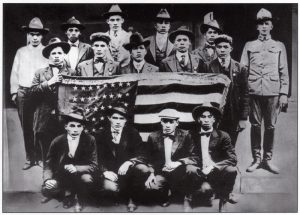
One of the concerns in organized military warfare is the need for communication and the need to conceal that communication from the enemy. During the nineteenth century, the American military relied on bugles, drums, and flags to communicate on the battlefield.
By the beginning of the twentieth century, the nature of long distance human communication had changed with the development of telephone and radio. The problem of how to code messages so that the enemy, who was presumed to be listening in, couldn’t understand them and yet communicate quickly and effectively was still a concern. One solution was the development of American Indian code talkers who could use their tribal language as the basis for an unbreakable code.
World War I
In 1917 the United States entered into World War I. While Indians were not liable to be drafted, they enlisted in large numbers. Many of the volunteers were eager to count coup, gain war honors, and to maintain the warrior traditions of their tribes. An estimated 10,000 Indians served in the military during the war.
During World War I, one regiment used Choctaw officers to transmit messages in Choctaw regarding troop movements and other sensitive operations. In doing this, the Choctaw had to develop a special Choctaw vocabulary for military words such as machine gun and hand grenade.
With regard to the use of Indian code talkers, Rebecca Jacobs, in an article in This Week From Indian Country Today, reports:
“Individuals speaking Cherokee, Northern Cheyenne, Comanche, Osage, and Lakota, Nakota and Dakota dialects were also used to transmit messages during World War I.”
While some special code words were developed, the World War I code talkers basically translated the English communications into their tribal languages. German linguists, however, were eventually able to break these codes.
World War II
In anticipation of World War II, Congress passed the Nationality Act which once again conferred citizenship on American Indians and required that Indian men register for the draft.
Native American “code talkers” who spoke their native languages were used to help facilitate rapid communication without enemy comprehension. The most famous of these are the Navajo Code Talkers. Initially, only 30 Navajo were recruited by the Marines to serve as “specialists” in an experimental unit. They developed a new military code which included 413 military phrases which were broadcast in their own language. For example, the Navajo word for “chicken hawk” is used to designate a dive bomber. The code baffled the Japanese. As the war continued, 421 Navajo were trained as code talkers.
The Navajo recruited by the Marines to be trained as code talkers faced culture shock at boot camp. While Navajo elders never raised their voice to obtain obedience and Navajo culture teaches that it is disrespectful to look someone in the eye, the recruits were exposed to Drill Instructors who shouted at them and forced them to maintain eye contact.
The Navajo who had been to boarding schools already understood the basics of marching. Navajo code talker John Benally explains:
“We had been exposed to discipline, in some respects, during the old boarding school days within the Bureau of Indian Affairs. We were marched to school, the dining hall and church in formation. We knew how to drill, not in true military fashion, but we knew how to drill.”
At the graduation of the all-Navajo 32nd Platoon, Colonel James Underhill called them “the first all-American platoon to enter the United States Marine Corps” and tells them “Yours has been one of the outstanding platoons in the history of this Recruit Depot.” In her book Navajo Weapon: The Navajo Code Talkers, Sally McClain writes:
“This was high praise indeed for a group of men whom BIA experts had deemed ill suited to achieve success if treated like ‘regular Americans.’”
The Marine Corps asked the Navajo who had been selected as a part of a special communications unit to develop a special Navajo language code to be used in battle situations. Sally McClain reports:
“Many of these men had been punished, sometimes brutally, for speaking Navajo in classrooms similar to this, classrooms in schools run by the same government that included the armed forces. Now this government that had punished them in the past for speaking their language was asking them to use it to help win the war.”
U.S. Marine Navajo code talkers helped in the conquest of the island of Guadalcanal and patrols found that the code talkers made the difference between life and death. At Iwo Jima, the Navajo code was the only spoken code which was used.
While it is common today to associate the idea of code talkers with Navajo Marines, other tribes were also used as code talkers. The U.S. Army in both the Pacific and in Europe used Sioux Code Talkers who spoke the Dakota, Lakota, and Nakota Sioux languages as code. As with the Navajo, the Sioux Code Talkers program was classified and the contribution of these soldiers was not officially recognized until long after the war.
In addition to Navajo and Sioux code talkers, other tribal members were used as code talkers. This included Oneida, Chippewa, Choctaw, Sac and Fox, Hopi, and Comanche. The Comanche were recruited by the Army for use in Europe because their language had no written form and could not be easily decoded by the Germans. The Choctaw code-talkers used the phrase posah-tai-vo, which means “crazy white man” as the code term for Adolph Hitler.
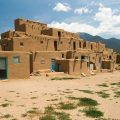
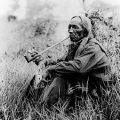
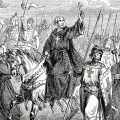
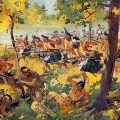
Leave a Reply